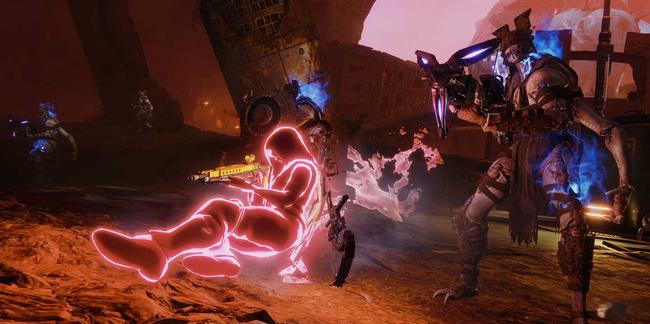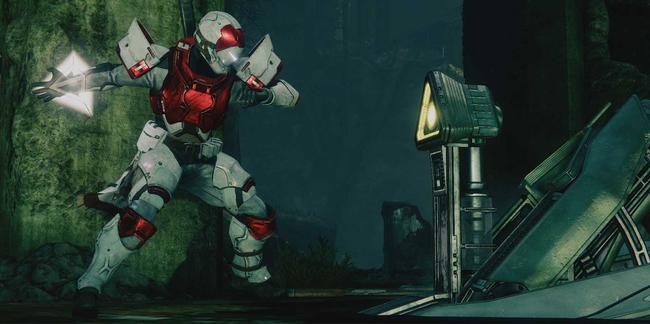
Destiny 2: Forsaken Review
Looking back on my original Destiny 2 review, I can't say I was the best-qualified person to take a look at the game. While I was far from the only one to fall for the hype - real criticism for the game didn't seem to emerge until a few weeks after launch - I lacked much of the historical context for the changes to the game's base mechanics. These same changes that led to myself and others abandoning the game mere weeks after launch, feeling as though we had nothing else to chase, and no more content to explore.
The first two Destiny 2 DLC packs didn't do much to stem that tide. I'd argue that Warmind was - if nothing else - a solid bit of content, but Curse of Osiris did much more harm than good for the game's reputation. Originally I had no intention of returning to Bungie's massively-multiplayer loot shooter, but a longtime friend of mine was looking for a game he could sink some time into without a subscription fee. After a few weeks following Destiny 2: Forsaken's launch he found himself interested in the expansion, and with myself not wanting to be left behind - I opted to grab the game and restart my progress on PC as well.
From the get-go, Forsaken's emphasis on a darker story is obvious. Within seconds players are shown Cayde-6's death, and by the end of the campaign, your character will have unambiguously murdered more than a handful of characters in the name of revenge. The expansion's endgame location - the Dreaming City - has been trapped within a 3-week cycle of a curse gradually worsening ever since the first team to clear the expansion's raid put an end to a character in the Destiny universe's lore. Outside of the story, Gambit has players competing in a newly coined "PvPvE" mode, wherein players gather drops from defeated enemies, bank them to send enemies to the other side, and eventually gather enough power to invade to the other team's map to throw a wrench into their plans and inhibit their progress. Although in the grand scheme of things these additions might seem like a small change, they go a long way towards signaling Bungie's overall heel turn when it comes to Destiny's latest and greatest expansion.

Almost all of the changes from base-game Destiny 2 have been reversed. Weapon slots now work the way that they did in Destiny 1, allowing for much-improved loadout diversity compared to the game at launch. Destiny 2's PvP has been sped up, and at least in casual Crucible teams are now 6v6 instead of 4v4, alongside a reduced time to kill. Additionally, all of the non-Exotic weapons added with Forsaken now come equipped with randomly rolled perks, allowing players to grind out the set of bonuses that gel with their playstyle, alongside giving max power players another reason to continue the grind. Almost every change that has been made with Forsaken has made Destiny 2's endgame last longer, even the ones that aren't simply a return to the way things worked in Destiny 1.
Masterworking weapons and armor was a concept introduced between Destiny 2's release and Forsaken's announcement, allowing players to use planetary resources and "Enhancement Cores" to improve a weapon's base stats. Exotic weapon catalysts make both newer and older guns stronger after players perform some tasks to both acquire the catalyst as well as fill out its requirements to complete the powerup. Infusing one weapon's "Power" stat into another is still available, but has now become less forgiving with each infusion requiring a certain amount of Enhancement Cores to complete the process.
To this end, Destiny 2's endgame now has a treadmill whereas before it didn't. Alongside newer, more interesting exotic quests from Warmind, as well as the content introduced in Forsaken, the series has never been in a better place. Daily and Weekly milestones that grant "Powerful Gear" are plentiful enough to always make you feel as if you're growing stronger on the grind up to Power 600, while also being lenient enough that the grind to being prepared for the raid will take several weeks for even the most dedicated of players. New activities such as Escalation Protocol, Ascendant Challenges, and the Blind Well offer players more to do outside of Strikes and the Raid - and that's not even getting into the new "Dungeon" activity that acts as sort of a 3-person Raid in the Shattered Throne.

Over the last month and a half, Bungie has shown that they're committed to preventing the content drought of previous releases - this year's Halloween "Festival of the Lost" event included a new game mode available to all players, and the roadmap that they've laid out for the next year has me convinced that there'll be enough reasons for me to return to the game every month or so for the foreseeable future. Bungie might've lost a portion of their player base for good, but for anyone that wishes to continue playing - or hop in now - Forsaken does a lot to fix Destiny 2, while forging its own identity.